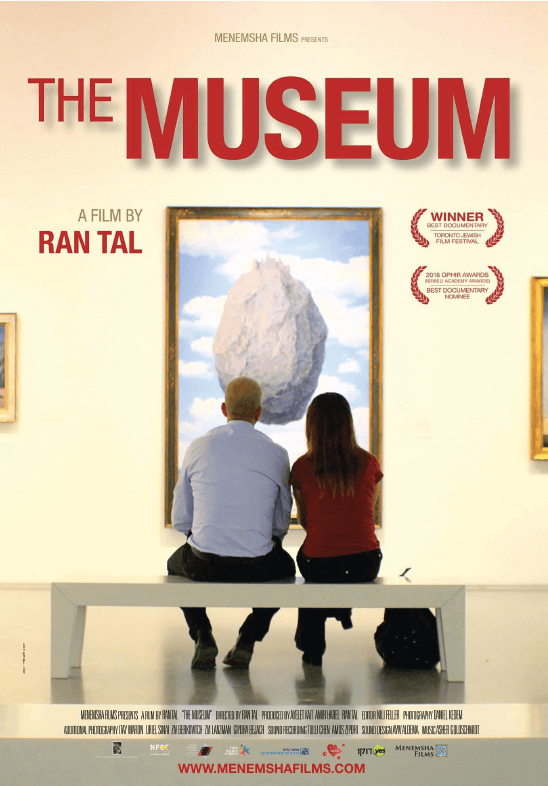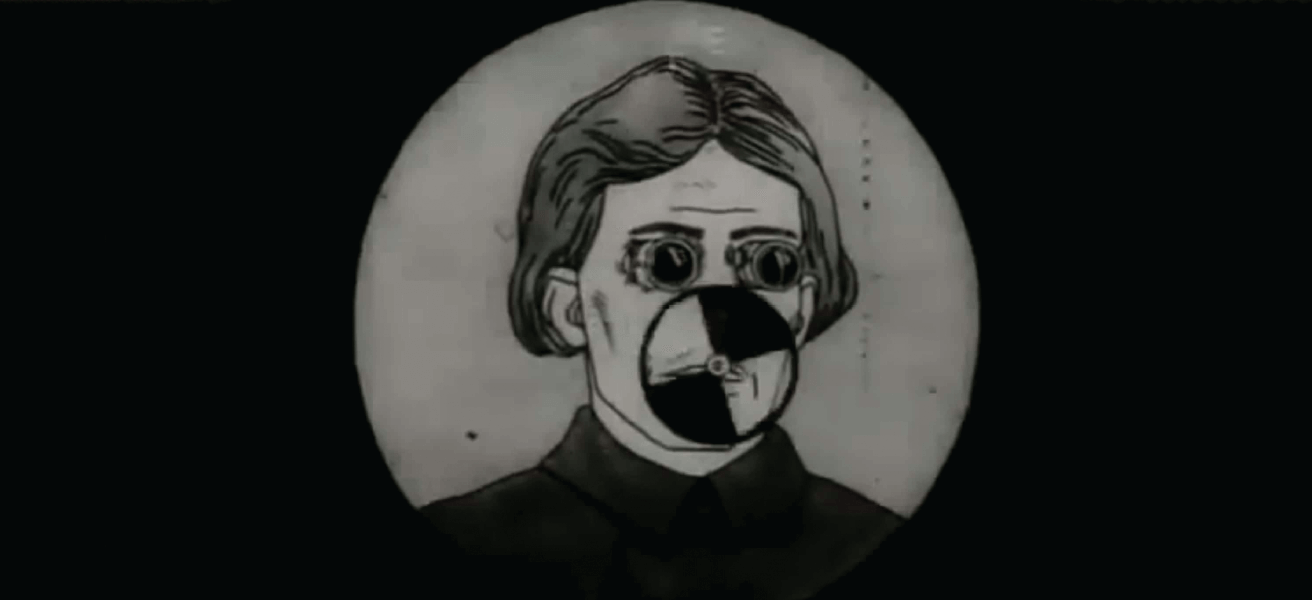Above: Detail from Archie Rand. 326: To Send the Impure from the Temple (Numbers 5:2), 2001-2006. From the series The 613. Acrylic on canvas. 20 x 16 in. Photo by Samantha Baskind
PEDAGOGY
Welcome to the inaugural edition of “Teaching with Film and Media,” a column in which our colleagues from different fields will share film choices and ideas about how to use them in the classroom. Curated by Olga Gershenson, each column will engage with the theme of the current issue of AJS Perspectives. To start us off, here are two ideas for using film to approach art in the Jewish Studies classroom.

The Museum, movie poster, 2017.
The Museum (Ha-muzeon, Ran Tal, Israel, 2017, 72 minutes) offers a nuanced record of life at Jerusalem’s Israel Museum. The film lets viewers experience the museum’s galleries, storerooms, and board meetings. Singing guards, blind patrons, and a Haredi inspector share the screen with curators, Palestinian guides, and an American museum director. With no didactic narration and no judgement, Tal’s approach is both ironic and comprehensive.
The film is sensitive to politics, evident not only in the official ceremonies with government brass, but also in the backstage decisions and everyday routines. For example, one scene gives us an insight into a curatorial debate: What is to be done with a collection of precious Palestinian and Druze embroidery? “You display it,” explains the curator, “and it will be an act of cultural appropriation. You don’t display it, and it’s an erasure of the minoritized cultures.” In the end, the curators, both Jewish and Palestinian, decide to preserve the treasure the best they can, until times change.
The Israel Museum emerges in the film as a microcosm of Israeli society. A short running time means the film can be screened in its entirety, but its vignette structure also makes it ideal for clips. It can be used in classes dealing with Israeli culture and society. It will provoke discussions about relations of power, cultural appropriation, historic legacies, and even contested claims to the Land of Israel.
The Museum is available from Menemsha Films, https://www.menemshafilms.com/.
.
OLGA GERSHENSON is professor of Judaic and Near Eastern Studies, and of Film Studies at the University of Massachusetts Amherst. Her most recent book is The Phantom Holocaust: Soviet Cinema and Jewish Catastrophe (Rutgers University Press, 2013). She is currently working on a book about Israeli horror films.

Still from Soviet Toys (Dziga Vertov, 1924).
Soviet Toys (Sovetskie igrushki, Dziga Vertov, 1924, 10 minutes), the first animated Soviet film, is emblematic of the political aspirations of Jewish filmmakers and their innovative use of technologies. Created in a medium that would attract many Jewish artists seeking to build a social utopia one frame at a time, Soviet Toys is both an advertisement for the film studio and propaganda for Bolshevism. Its stop-motion animation allowed Jewish artists to create visual gags that projected their Bolshevism and faith in film technology.
We watch the film through “Movie-Man,” whose eyes are camera lenses that record society and its types. Despite the documentary conceit of the ever-watchful Movie-Man, the film communicates primarily through the special effects of stop-motion gags. The Capitalist enjoys a magically self-laid table. Ladies appear out of nowhere. Clerics are hinged like wooden nutcracker pieces, whose mouths go up and down. Seeing Movie-Man’s expos of abuse, the Worker appears and defeats the Capitalist. Soldiers hang other corrupters of power by the neck, transforming them into decorative ornaments on the New Year’s tree. At the conclusion of the film, Movie-Man sits in a thoughtful pose behind a desk at the state film offices and turns his goggled eyes squarely on the viewer.
Simultaneously a product of craft and an icon of Jewish avant-gardism, the film finds resolution in its own documentary power. Soviet Toys elicits a range of responses from students, and can be productively employed in courses dealing with Jews and film, media, Soviet history, and cultural production.
Soviet Toys is available for free download at https://archive.org/details/DzigaVertovSovietToys1924.

MAYA BALAKIRSKY KATZ is a psychoanalyst and associate professor of Jewish Art at Bar-Ilan University. She is co-editor, along with Steven Fine and Margaret Olin, of the journal Images: A Journal of Jewish Art and Visual Culture. Her forthcoming book Freud, Religion, and the Birth of the Psychoanalytic Periodical (Cambridge University Press) explores the exposition of religion during the founding years of the first psychoanalytic periodicals.